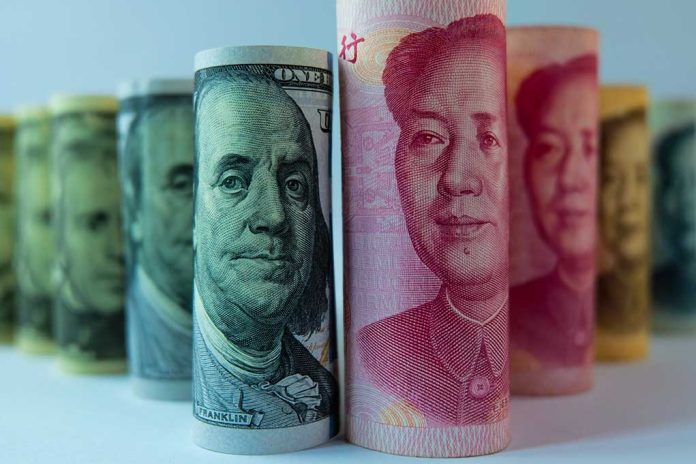
The U.S. economy grew 2.8% in Q3, fueled by increased consumer spending in a stable inflationary environment.
At a Glance
- U.S. GDP grew at an annualized rate of 2.8% in Q3, surpassing expectations.
- Consumer spending, accounting for 70% of economic activity, rose by 3.7%.
- Inflation approaches Federal Reserve targets, prompting rate cuts.
- Exports surged by 8.9% and wages continued to rise.
Economic Growth: A Deeper Look
The U.S. economy expanded at a healthy annualized rate of 2.8% in the third quarter, slightly below the previous quarter’s 3% but exceeding forecasts of 2.6%. This growth trajectory, reported by the Bureau of Economic Analysis, underscores the economy’s resilience, driven significantly by robust consumer spending. Accounting for approximately 70% of economic activity, consumer expenditure climbed at a notable 3.7% rate in this quarter.
Key factors contributing to this consumer confidence include rising wages and decreasing unemployment rates. These enable households to spend more freely despite inflationary challenges. Inflation eased considerably, nearing the Federal Reserve’s 2% target, with the personal consumption expenditures index rising at a 1.5% annual pace.
The U.S. economy grew at a 2.8% annualized rate in Q3.https://t.co/qHGf5n4FeX#GDP
— BEA News (@BEA_News) October 30, 2024
Indicators of Economic Strength
The third quarter report indicates strong performance, supported not only by consumer spending but also by an 8.9% rise in exports. However, while business investments showed some slowdown, profits from equipment spending remained robust. This reallocation is indicative of businesses adapting to changing economic conditions.
Looking ahead, the Federal Reserve’s decision to begin cutting interest rates further signals confidence in a soft economic landing despite global uncertainties. With inflation controlled, expectations are high for continued economic stability and growth.
U.S. Q3 GDP grew at 2.8% (down from 3.0% in Q2), driven by consumer spending, exports, and federal spending. Inflation eased, with the PCE index up 1.5%. Personal income rose slower, saving rate dipped to 4.8%. Inventory and residential investment slowed growth. pic.twitter.com/yPPJBPwfVH
— Econoday, Inc. (@Econoday) October 30, 2024
Political Implications
The economic performance in Q3 also plays a significant role in the ongoing political landscape. As the nation saw another election year, the economic strategies of leading political figures, such as Vice President Harris and President-elect Trump, have been under scrutiny. The Harris campaign was urged to focus on family tax credits and business support, while Trump emphasized tariffs and tax cut extensions from 2017.
Economic stability and growth remained key focal points for both political camps, impacting voter confidence and campaign strategies. The positive Q3 data supports an optimistic economic outlook that aligns with a decrease in expectations of a possible recession, enhancing consumer and investor confidence.














